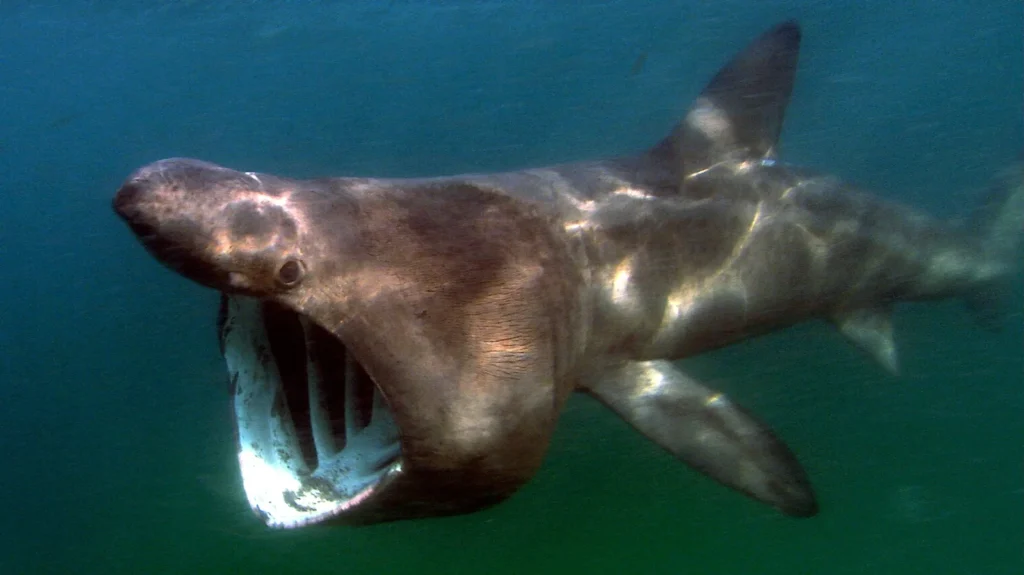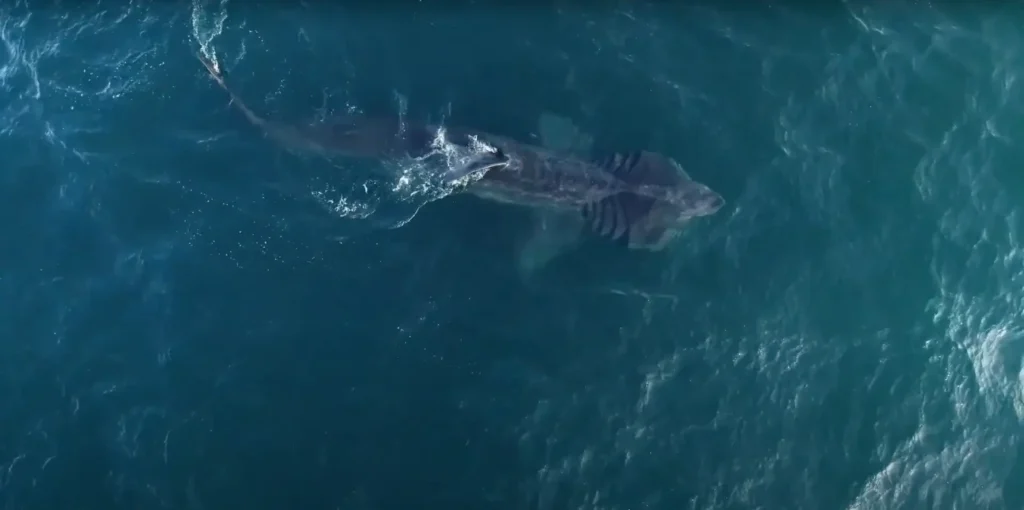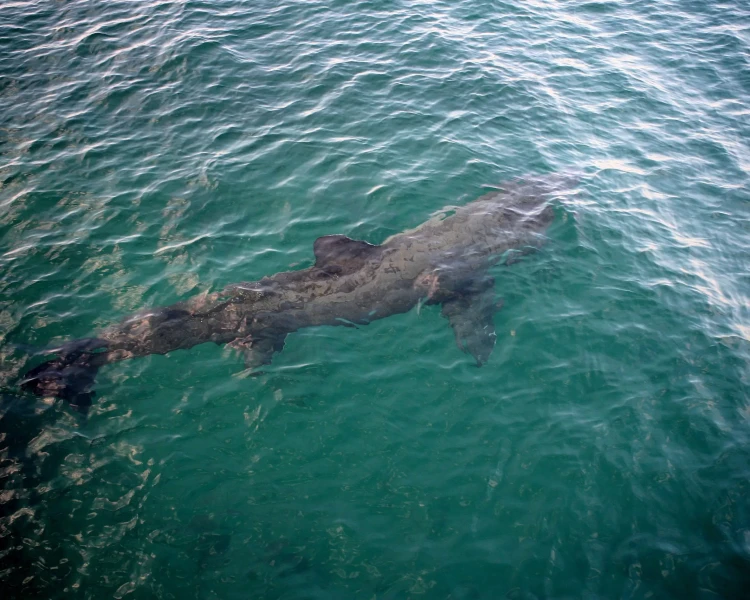Giant Shark (Cetorhinus maximusIt is the second largest fish in the world after the whale shark. It gives the impression of a real sea monster due to its huge size, but, unlike many other sharks, it is not dangerous to humans. This giant – plankton-fed filter mediaslowly gliding through the ocean expanses with its mouth wide open.
🔥 What makes a giant shark unique?
✔ Length up to 12 meters and weight up to 4 tons
✔ It feeds on microscopic plankton, not fish or marine mammals.
✔ A huge mouth that can open up to 1 meter wide
✔ Ability to perform long-distance seasonal migrations
✔ One of the oldest sharks, dating back more than 30 million years
The giant shark is a real one ocean giantwhose behavior and lifestyle are still a mystery to scientists.

Scientific classification
🔬 Classification of the giant shark:
✔ The Kingdom: Animals (Animalia)
✔ Type: Chordal (Chordata)
✔ Class: Cartilaginous fish (Chondrichthyes)
✔ Row: Lamnopodobnye (Lamniformes)
✔ Family: Giant sharks (Cetorhinidae)
✔ Gender: Giant Shark (Cetorhinus)
✔ View: Giant Shark (Cetorhinus maximus)
📌 Interesting!
A giant shark is the only representative of the Cetorhinidae familywhat exists today.
Appearance and anatomy
, Main Features:
✔ Body length: 6-12 m
✔ Weight: up to 4 tons
✔ Life span: 50 years or more
🔹 Unique anatomical features:
✅ A huge head with a wide mouth, reaching 1 m in width
✅ The body is fusiform, tapering to a tail
✅ Dark brown or gray color of the back, lighter belly
✅ Long gill slits that cover almost the entire length of the head
✅ Large pectoral and dorsal fins, powerful strong tail
📌 Interesting!
Despite their huge dimensions, there is a giant shark slow swimmer and it usually moves at a speed of only 3-4 km/h.

Habitat and distribution
🌍 Where does the giant shark live?
This view has cosmopolitan spread and occurs in in temperate waters both hemispheres.
🔹 Main habitats:
✅ Atlantic, Pacific and Indian Oceans
✅ North and Baltic Seas
Воды Waters around the UK, Canada, USA, Japan and New Zealand
🔹 Habitat depths:
✅ On the surface (0-10 m) in the warm season
✅ It can descend to depths of up to 900 m in the winter months.
📌 Interesting!
Giant Shark performs seasonal migrations, moving to warmer waters in winter.

Lifestyle and behavior
🔹 Basic behavioral traits:
✔ A slow, peaceful swimmer moving slowly in the water column
✔ Likes to stay on the surface and is often observed near the coast
✔ Able to gather in large groups of up to 100 individuals (but usually swims alone)
📌 Interesting!
This shark often exposes the dorsal fin above the waterwhich sometimes scares people, because from a distance it can be confused with a white shark.
Food and method of hunting
Giant Shark – filterer, what it feeds exclusively on plankton.
🔹 What is included in the diet?
✅ Small zooplankton
✅ Krill
✅ Crustacean larvae
✅ Microscopic fish
🔹 Power method:
✅ It floats slowly, opening its huge mouth
✅ Filters out plankton through special brush plates in the gills
✅ Each hour can filter up to 2 thousand tons of water!
📌 Interesting!
Unlike the whale shark, which actively sucks up water, the giant shark is a giant shark. passively filters plankton moving forward.
Reproduction and development
🔹 Features of reproduction:
✅ Puberty: at the age of 10-15 years
✅ Pregnancy lasts more than a year
✅ Gives birth to 1-6 cubs, up to 1.5 m long.
✅ Newborn sharks are completely independent
📌 Interesting!
Scientists still do not know exactly where the giant shark gives birth to offspring-its breeding sites remain a mystery.

Natural enemies and threats
🔹 Natural enemies:
⚠ Killer Whales
⚠ Large sharks (e.g. tiger shark)
⚠ Parasites (attach to gills and skin)
🔹 Threats from humans:
⚠ Commercial fishing (especially in the 19th and 20th centuries)
⚠ Climate change and plankton extinction
⚠ Entanglement in fishing nets
📌 Interesting!
Despite the historical catch, the population of the giant shark it's going down, and the view is considered vulnerable.
The Giant shark and the man
🔹 Why is it important for people?
✅ Previously used in fishing to produce liver oil
✅ Interesting place for ecotourism (shark watching)
✅ It is considered a "friendly" shark because it does not attack humans
📌 Interesting!
The giant shark sometimes swims up to the boats and calmly accompanies the divers, demonstrating curiosity about the world around you.
Conclusion
The giant shark is a real ocean giantIt represents harmony and tranquility in the depths of the sea. Although its huge size can cause fear, in fact, it is a harmless filter element that plays an important role in the marine ecosystem.
Zustriti * * meet a giant shark-this is a real miracle of nature!